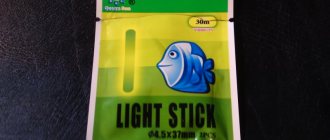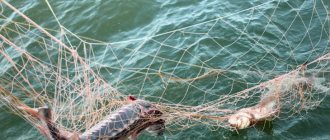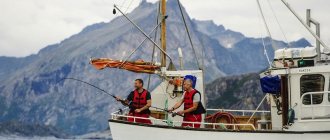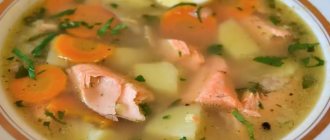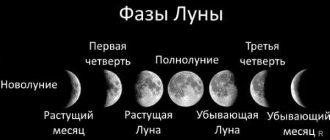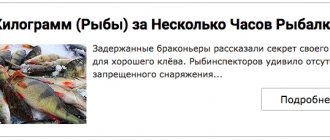The Eastern Berezina begins on the Minsk Upland from the swamps near the town of Dokshitsy and, having traveled more than 600 kilometers through the Vitebsk, Minsk, Mogilev and Gomel regions, flows into the Dnieper near the village of Beregovaya Sloboda in the Rechitsa region. Found : pike, perch, roach, bream, tench, crucian carp, sabrefish, catfish, chub, white bream, silver bream. Valuable species: pike perch, asp, lamprey.
in spring
Read more: Fishing on the Eastern Berezina IN SPRING >>> *fishing*
It is not recommended to go for pike in March. In Eastern Berezina it spawns at exactly this time. In April, where the river Skha flows into the Berezina, there is a large wide bay. Good bream are caught there. Without fear of leading other amateurs to the fishing spot, let us clarify: this is opposite the aggregate plant where the dredger is moored. Good roach and silver bream swallow the worm on a feeder or fly rod. But not far from Berezino in April and May you can’t get to the shore, it’s flooded with water. At the quarry in a wading suit they catch catfish weighing ten kilograms with a jig.
Fishing with a feeder on the Eastern Berezina. Retirement
So, on Friday morning I decided to go to Uholoda. I go there once a year maximum, twice, and even then for a very long time. My fishing there wasn’t very successful; I never reached the fishing quota. And, to be honest, they turned out to be very boring, except that the company was always pleasant, either serega_hunt or Aleksn was nearby.
On Saturday we had to celebrate at a family holiday in Borisov, and in the morning it was decided to quench the itch in this very place. Asya agreed to go with me (which I regretted at least twice). The first time I was waiting for her in the city from work until half past seven, although everything inside was already aching, I wanted so much to go to the river. To its measured murmur, the singing of nightingales, the screaming of frogs, the squeaking of mosquitoes... But once you get married, be ready. While I was waiting for my beloved, I mixed a dose of bait for the night. RS feeder river (FR) + RS bream sport black (LSCH). Mixed it with molasses and water 50/50. The bait turned out to be very heavy, the overall fraction was average. It’s hard to put into words its properties, but this is exactly how I see the ideal bait for the river. I did something similar during my autumn trip to Pripyat last year based on Sensas components.
Back then, I remember, there was practically no water in the bait, only molasses with aromixes. There is a nuance in preparing such bait; it should sit for at least three hours, or even better, ten hours. Then it practically does not leave the feeder during the fall, but due to the rapid dissolution of sugars (I do not pretend to be true), it leaves the feeder quite well at the bottom. This bait does not generate dust and does not collect bleak, which is ubiquitous on the river in summer. It is an ideal carrier for the living component, releasing it at the bottom. I added a few grains of the so-called yellow “chapelure” to the bait, as well as a few grains of fried hemp. That’s the whole composition. Oh yes, I forgot about the can of corn. I threw about a third of the jar onto 2 kg of bait, you never know. Of the living components, I only had maggot (large pink): 1.5 liters of yellow, red and white. I hoped to dig up worms at the turn, in the already familiar pile. We started around 8 pm. But the journey is not far and the kilometers go by quickly along the M1. At the beginning of ten, after short wanderings around Ukholoda, I missed the turn as usual, we were already digging in a pile of manure, collecting striped worms. Then the road went a little across the field, and my surprise knew no bounds, Aleksna’s place was free. In Sergei’s place sat two local guys with bells and all sorts of jingling gadgets, fortunately they slept at night without re-throwing. They had no bite. It quickly began to unfold. I decided to fish a familiar place with two sticks, the first one was at a distant shallow outlet with a shell, the closest one was 5 meters closer at the foot of the far edge, there was no shell at the bottom, there were snags a little lower and closer to my shore. And again, surprise, on the long range, despite the normal water level, an 80 gram RTF feeder in a large size lay quietly, on the short range 60 grams! But while fishing, my braid became brown, like water in a river, it was apparently clogged with all sorts of little things, and the feeders began to pull up a little, more pronounced on the near one, which caused the transition to a similar feeder of 80 grams. Under these conditions, I laid out two Sabaneev 360 to 100 grams (I’m very pleased with them at such weights and distances, and in general I’m happy). I was the first to start feeding and catching the long-range fish. Several starting feeders with an abundance of maggots and the fish responded, the small silver bream began to delight with bites. Then he got busy with the fire and while he was going for firewood, Aska had already pulled out a palm-sized silver bream on both sticks. Specimens up to 200 grams began to come across. But the bites were not systematic, closer to 12 o’clock at night I caught several bluegills, and after 12 the bite died down completely, but I’m a decent marathon runner, I recasted no more than once every 5 minutes. An interesting night awaited us; instead of the predicted 10 degrees, there were only three degrees above zero. My little one moved from an unusual tent for her to a warmed car (here I regretted it for the second time, because I was very worried that Aska was very cold, but she endured such adversity with steadfastness, even with humor, for which I thank her very much, curled up on, by the way, not very comfortable front seat of my little one). I couldn’t sleep and spent time in a chair by the river, a good view was replaced by clouds of fog that turned the bright night into an eye-catcher. At 2.30 bites appeared again, mainly at the nearest point. And the fish pleased me with its size. The 300 gram silver breams cheerfully pecked at the maggots, but not all of them ended up in the cage. Because of the cold, I climbed into my sleeping bag and really didn’t want to reach for the landing net, because I had to get out of the warm shelter. So the largest ones simply delighted me near the shore and broke off or broke off the 0.1 leash (several very worthy ones under half a kilo). The sun drove away the fog for quite a long time, it was very stubborn, hanging over the river as dark clouds. It really seemed like the clouds had descended to the ground. The bite did not weaken at all with the arrival of a normal morning. They began to come across breams without a system. The bream was usually followed by a bite from the silver bream. This continued until about 9 o’clock, when I, already quite exhausted, started preparing coffee and food. The dots did not receive food for a long time and the fish jumped away. Before the final collection, I set the pace to the nearest point, which again brought stable bites, Aska almost pulled out a half-kilogram silver bream, but the landing net was folded and the leash was thin.

All fishing was carried out with maggots, and if at first the fish was sure to take a sandwich of red and white, then later I caught it with one yellow one. The fish refused to bite on the worm and corn, although the latter was present in large quantities in several fish taken for frying. The catch included: silver breams, several blue breams, two bleaks, two sabrefish, a dozen and a half breams, some roach and a gudgeon. Almost all the fish look perfect. No pain or injury. The breams on the Berezina are especially beautiful; even 100 grams of them look like real bream, they have a dark color, a pronounced hump, small smart eyes - such plump, strong rounds.
The total weight of the catch is slightly less than 6500 grams. The largest were the silver bream and white bream at 600 grams. There were no bonus bites. A lot of fish were dropped in the coastal grass due to the sloppy non-use of the landing net.
Author:

The report was published on our forum (go to view all reports from the Eastern Berezina)
In summer
Read more: Fishing on the Eastern Berezina IN SUMMER >>> *fishing*
Fishing truth: “to catch in the summer is to feed mosquitoes.” But what are mosquitoes if, starting above Veselovo, upstream towards Palik, wonderful, dark-colored perches with a bronze tint are caught! The Berezina, like many other Belarusian rivers, is treacherous. You can stand side by side with the same tackle and baits, and one will have seven pikes, while the other will not even have a single strike. But the advice is still taken into account and, sometimes, it helps. For example, 4 kg. The pike perch was caught using a simple wobbler. Without a noble “pedigree”, but with a high frequency of small fluctuations. Postings in half-water without twitching or steps, evenly, taking into account the timidity and caution of fish of this species.
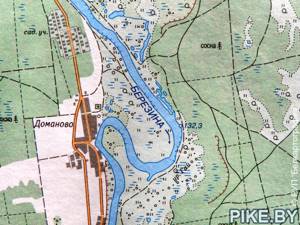
in autumn
Read more: Fishing on the Eastern Berezina IN AUTUMN >>> *fishing*
In the pre-winter period, when all the fish are no longer very active, fishing enthusiasts on the Berezina walk a lot, looking for new ones or returning to familiar fishing spots. For example, downstream from Lake Palik, not far from the village of Karsakovichy, they wander into the Lisino oxbow. For old times' sake, they look for pikes here, but there are few of them left here anymore. They pass on foot with a spinning rod from Borisov and below. Or after Berezino, 5 kilometers down to the quarry, avoiding the approaches to the reserve - there is a quagmire there. Without a boat, such routes are tiring. But in November you can’t go for a walk – the water is very high.
Berezina - a place for fisherman
We provide fishing spots in rivers and lakes

First of all, we should note the Dnieper, Pripyat, Sozh, Neman, Western Dvina, Berezina, Mukhavets.
These are the main arteries of the Belarusian water system. Both feeder and spinning lovers can fish here, not to mention float rods. Conditions allow.
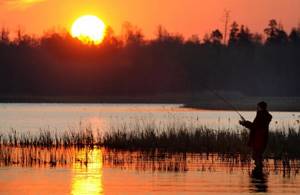
“I’ve been to a lot of places and fished, but for me personally the best fishing is in Belarus. I often go to Pripyat and Braslav. Not only can you catch fish, but the places are very beautiful. If you don’t have much time, then you can go fishing near Minsk. I fish with everything: with a spinning rod, with a float, and with a hook. If one thing doesn’t bite me, then I try something else.”
Alexander Gleb , football player, fishing enthusiast

Many people like to catch such “non-standard” fish as ide. You will have to try hard to find it.
If you want to catch ide, then first of all you need to go to the Neman. In the middle reaches of the Neman there are many small and medium-sized roaches. You can also catch chub and bream here. In the upper reaches of the river there is a greater chance of catching large fish: even a kilogram or more. In spring and the first half of summer, it is preferable to fish in areas with bushes hanging over the water. In the second half of summer, as the water level drops, ide gravitates more towards depth.
There is also a lot of ide on Ptich, where it is caught under steep banks. The ulcer fishing season on Ptich and other rivers begins with the appearance of the first green grass along the banks, and the bite ends at the end of October.
“When fishing from boats, echo sounders help, thanks to which you can determine the topography and structure of the bottom. Carplotters (one device that combines the functions of a GPS navigator and echo sounder) are becoming popular now. You can very clearly see all the geometry of the bottom and even the fish. Spinning fishing is all about finding interesting places. Fishing with a feeder and a “float” is creativity in an already found place, where you attract fish using bait, bait and your own ingenuity. That is, it’s no longer you who are swimming towards her, but she who is swimming towards you.”
Maxim Bulavsky , active fisherman and owner of the online store reel.by
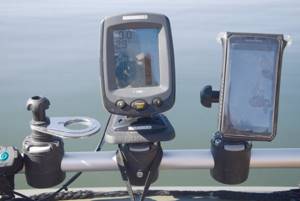
Winter fishing is neither more difficult nor easier, but definitely cheaper. First of all, it needs a drill to make a hole. In winter, predators are caught using girdles (a type of fishing gear for fishing with live bait) and winter spinners (90 percent of them are perch, the rest are pike perch and pike). Winter spinners are properly handmade; they are rarely produced industrially.
Several more types of fishing in winter: with a jig (fishing tackle: a hook soldered into a lead or tin shot) and with a float rod (only with winter adjustments). In winter, in most cases they are caught on lakes (which is logical: it is not safe on rivers with currents, although there are daredevils). The most popular place is the Vileika Reservoir. Almost the whole country goes there to fish in winter. Of the baits, the number one bait is bloodworms.
in winter
Read more: Fishing on the Eastern Berezina IN WINTER >>> *fishing*
On the first ice, as expected, the perch bites. In the village of Snuya, usually in January the ice in the oxbow lakes is already 8-10 centimeters thick. At the junction with the river it is very dangerous - the ice is too thin. In some places it is not there at all. Those who visited the Solnechnaya Polyana sanatorium speak enthusiastically about fishing and recreation. Here, the ice stakes are not silent - many lift pike per kilogram. The ice is strong, and the frosts are not very harsh. Ice fishing enthusiasts who chose the site near the village of Kholkholitsy are also pleased. There, too, the weather is often “frost and sun, a wonderful day,” the blows are frequent, the bite is active, and amateurs every now and then engage in heated fights with fiercely resisting pike. Author: Pike.Pinsk©, photo: mozharben, ROCKY BALBOA, SergeyKSN, ADVICE.
Fishing on the Eastern Berezina: SPRING SUMMER AUTUMN WINTER
Eastern Berezina - what and where they catch
3.9 (78.67%) 15 votes
